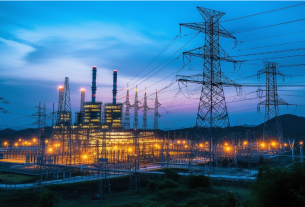The steel industry is one of Europe’s powerhouses, contributing some €110 billion a year to the European economy, employing 330,000 people and supporting a further 1.6 million jobs in related sectors. Until recently, it has been impossible to achieve the high temperatures required for steel production without burning large quantities of fossil fuels – consequently, the steel sector currently generates around 7% of global and 5% of EU CO2 emissions.
But recent technological advances using hydrogen promise to change that, and that’s where the EU’s Innovation Fund comes in. The Fund, financed by the revenues from the EU Emissions Trading System (ETS), is one of the world’s largest investment programmes for net-zero and innovative green technology. With a grant of €143 million from the Fund, the HYBRIT Demonstration project aims to put green steel on the market before 2030.
So, what is the new technology, who is behind it, and what will its impact be?
The technological breakthrough
Martin Pei is SSAB’s Chief Technology Officer, leading the team that developed the pilot project in Luleå, northern Sweden. Excellent cooperation between engineers from the three owner companies (mining company LKAB, energy company Vattenfall and steel company SSAB), associated research institutes and universities enabled the team to reach their goal much faster than anticipated, despite difficulties commissioning and building the pilot plant during Covid-19 lockdowns.
Then, the successful HYBRIT pilot has helped pave the way for the HYBRIT demonstration project.
The name – an acronym for Hydrogen Breakthrough Ironmaking Technology – sounds intriguing. What does the breakthrough consist of? Traditionally, iron is produced by burning fossil fuel to heat and reduce iron ore in a blast furnace, releasing carbon dioxide into the atmosphere. Now, the team aims to produce iron using hydrogen as the reducing agent and leaving water vapour as a by-product. To replace traditional furnaces, the Innovation Fund will support the construction of a first-of-a kind hydrogen-driven facility for iron production in Gällivare, Sweden.
But this is not enough, as hydrogen can also be produced from fossil fuels. Instead, the HYBRIT Demonstration project will use clean hydrogen, taking advantage of the high share of fossil-free wind and hydropower in the region’s electricity production.
In this way, in Martin’s words, the EU-funded project will “create a completely fossil-free value chain from mine to steel”.

Martin Pei, Chief Technology Officer at SSAB
© SSAB
From invention to impact
Now the challenge is to bring the new technology to commercial scale.
With EU funding, the HYBRIT Demonstration project will produce some 1.3 million tons of fossil-free steel per year, or around a quarter of Sweden’s total steel output. As such, the project has the potential to prevent more than 14 million tons of CO2 from entering the atmosphere in its first ten years of operation.
This will allow Sweden to reach its objective of a fossil-free economy by 2045 and hold on to an important economic sector that steel industry represents, safeguarding as many as 10,000 jobs according to the owner companies.
The Innovation Fund and beyond: greening our economy
The European Commission’s Executive Vice-President Frans Timmermans recently underscored the EU’s commitment to creating a sustainable future for the steel industry during a visit to Taranto, Italy, the host city of one of Europe’s largest steel plants. By funding initiatives like the HYBRIT Demonstration project, the EU is both helping preserve the fundamental role of steel production in our economy and facilitating the green transition of this sector to minimise its climate impact.
The Innovation Fund is not the only resource at our disposal to make the European industry greener. With the European Green Deal, the Green Deal Industrial Plan and the recently proposed Net-Zero Industry Act, the EU is scaling up the manufacturing of clean technology – which will not only contribute to the achievement of European climate targets, but will also create new highly skilled green jobs and boost the competitiveness of our industry.
Yet, in the end, the success of the green transition comes down to people, their ideas and convictions. Hundreds of professionals are contributing to the success of the HYBRIT Demonstration project, and Martin stresses the one thing they all have in common: “a heartfelt dedication to contribute to a better world”. That’s something we can all get behind.

